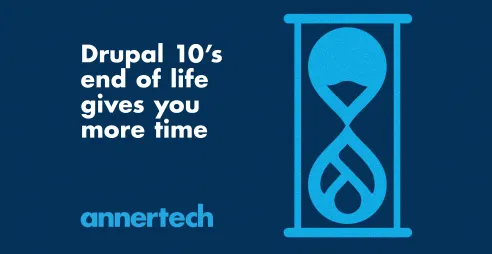Design Wars (or, Designing Web Projects)

Article content
Design means different things to different people.
What a UX designer thinks will be quite different from what a mechanical engineer thinks, which will be worlds away from what an artist thinks.
For example,
- I am a trained civil engineer. As an engineer, design is in providing the minimal technical solution that fits the brief.
- I often work in the role of a (web) site architect, where design is in accurately modelling business data to provide efficient and scaleable solutions.
- I was never great at graphic design as my photoshop-fu is weak, but I always understood that as a graphic designer, design is in creating beautiful interfaces for people to interact with.
As a developer, which takes up most of my daily work, I take website designs created by others and implement these into real, usable, functional software. I'm going to talk about things I have seen on real projects, with real clients and perfectly competent teams, where the design actually hindered the build process.
Building The Foundations, Out of TNT
Design can easily make or break a project, and graphic design is easily the most impactful of all design processes. From this point on, any references to 'design' will refer to web design, the graphical design of a web site, such as is often delivered as a Photoshop file (.psd) for implementation by developers.
I have seen great projects with great project teams really struggle because a design, whilst beautiful, was very difficult to implement. Conversely, a design that facilitates ease of implementation can make the project a joy to work on, and will result in a happy client and success all round. Site owners love something that they can 'sign off' on, and more often than not, the first thing that is signed off is the design, which can become a Bible against which the entire project is measured. It is little wonder that design can have such wide-ranging implications.
Deep Impact
There are many ways in which design can impact upon a project.
It's a safe assumption that a website will be built upon a content management system (CMS) - in Annertech's case, we use Drupal. The CMS will have a way of doing things, and the design can work with it, or the design can hinder it.
Nowadays, every site should be a responsive site. But does your design naturally lend itself to being responsive? This does not mean that as a designer you should create separate designs for multiple screen-sizes, but rather that a given design should naturally adjust and flow for different devices. In fact, having a separate design for mobile and tablet-sized screens to desktop can actually hinder development because of inconsistencies of design elements across Photoshop files. Without a solid understanding of how devices interact with and render a page, how page elements float and stack and expand and contract, you run the risk of a design that requires undue effort to force onto a small screen, resulting in a sub-optimal end product. When designing adaptive layouts, content order really matters too. The natural order and flow of DOM elements (if you are not a developer, read: "things on the page") should not have to be adjusted based upon screen width. To do so adds unnecessary complexity and will again probably impact upon performance - how quick your site is rendered on a screen for users.
An Artful Work of Fantasy
Sometimes a design will show visual effects that CSS simply will not produce. Whilst often these effects can be created with enough Javascript and imagery, often the trade-offs (maintainability, performance, page weight) are not worth the gain. Mobile performance, especially, can fall victim here.
A Font is Worth 1000 Pictures
Any designer worth their salt will tell you that font choice is hugely important. This is undeniably true. But the following things are often forgotten when choosing fonts:
- A font can add considerably to page weight, depending on how many weights/styles you include.
- On large and complex pages the Flash of Unstyled Text (the screen showing default fonts before the correct ones get to load) when using javascript-based font-replacement techniques can by very jarring. It can also be rather slow to go away on older browsers/machines.
- Fonts can be expensive, and clients do not always want to pay for them. The smart money says: find out what the font budget is before you do your design. For example, a Photoshop design showing Proxima Nova (€615.99) will never look like a site built using Arial. This will cause untold friction between developer, designer and client over the build process.
- Not all fonts are created equal. Some fonts might look lovely on a crisp MacBook Pro with retina display, but make sure you look at them on Windows, with a shoddy old 17" monitor. Often that is quite a different experience.
50 Shades of Grey
Great design is all about subtlety and attention to detail. However, this should not deliver a licence for the inclusion of unnecessary detail.
For example, a consistent and concise colour palette is a thing of beauty. However, more than a dozen shades of grey, many indistinguishable from one-another to the lay user, is merely an expensive waste. Again, try out the design on a low-budget monitor: can you tell the difference between #ffffff and #f4f4f4? If not, you probably don't need that level of subtlety and should simplify your design. Yeah, that's right: shots fired in the Needless-Shades-of-Grey wars.
To put it another way, consistency of design elements is a really powerful tool in a web designer's arsenal. Consistently presented elements, re-used in a logical manner, can endlessly simplify CSS, speed up site builds and improve performance. Clearly this is a desirable outcome!
An Appeal for Sanity
Speaking as a developer, this is my plea to designers everywhere to think about how your design can be implemented. Every addition to the design will have an impact on the build and probably on the end user. Is it necessary? Will it enhance or hinder? The ideal is design in the browser, so that you can mock up interactions, see how DOM elements (again, "things on the page") react to changes in screen width and look at what CSS can achieve and what it can't. This is not about asking the designer to do development, but rather to ensure that the agreed-upon design can be practically implemented.
Shucks, as a designer, you might even ask the developer "hey, any problems implementing this before I ask for sign-off from the client?".
Website owners: It's Up to You
Prospective site owners: people who would like to get a Drupal site built. This appeal I direct to you: "Do not accept the artful work of fancy."
There are two possible scenarios stemming from an impractical design.
- If you get the design before contracting a development team, the price will be higher than otherwise, as the design makes it more difficult.
- If the design is late and the developers have already begun, the project will be late as the effort required will be far greater than originally estimated.
Rather, ask for a design that works with your choice of CMS. One that facilitates responsiveness. A design that is not unnecessarily complicated. These are often the most beautifully simple, accessible designs. Everybody wins.
Love Your Developers
This final plea is one directly related to Photoshop. It is an amazing tool, and one that facilitates wonderful-looking sites. However, I open PSDs with dread. But it does not have to be that way. Herewith, a couple of tips to make the dev in your life happy:
- Name your layers. Names like 'Layer 35 Copy' make developers sad. We who are not conversant with the mysteries of Photoshop really find semantically named layers useful! (such as "Sidebar block, heading")
- Apply your layer effects. Unless one actually possesses a copy of Photoshop, one cannot see layer effects. Gimp and Preview won't parse them. Be nice to your devs and apply the effects to the layers that require them so that when we slice up a layer, we get the colour you intend and not a pale imitation.
Conclusion
Modern websites are really complex, and it takes a team of dedicated, skilled people to create them. The designer is often the first onto the green field site, and is arguably the person with the most far-reaching power. I suspect that many designers simply do not realise the depth and breadth of their power.
I think that in an absolute ideal, a designer would work alongside the developers, rather than rather than handing over "signed off designs", to create a site that is a harmonious thing of beauty.
Let's work together.
* No sites were harmed in the writing of this blog post
** Whilst all examples come from real life, names have been changed to protect the guilty parties
*** We'd love some cake, if you're sharing
If you want to discuss Annertech helping you build an award-winning website, please feel free to contact us by phone on 01 524 0312, by email at hello@annertech.com, or using our contact form.



